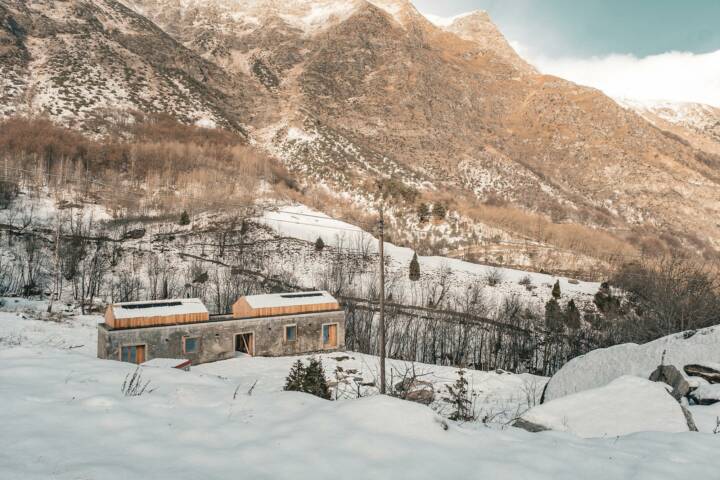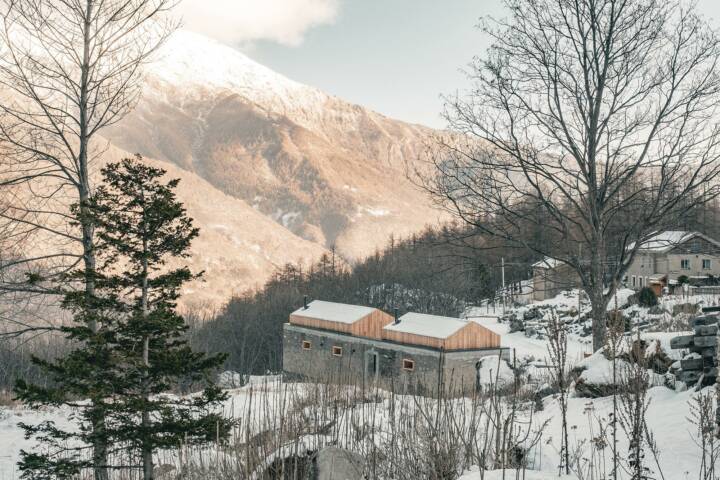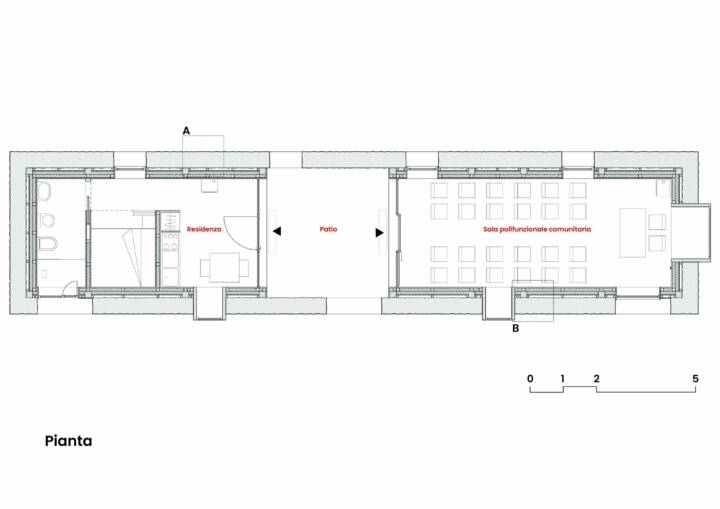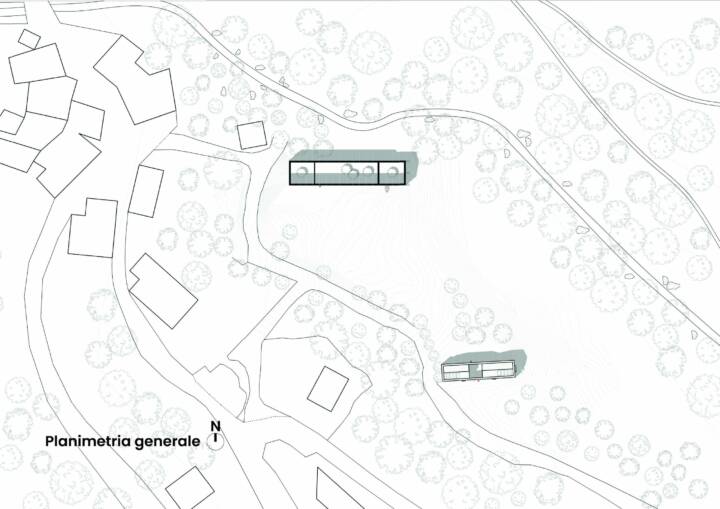Architects: Antonio de Rossi Coutan Architects Laura Mascino Matteo Tempestini Photography: Edoardo Schiari Construction Period: 2024 Location: Moncenisio, Italy
The municipality of Moncenisio commissioned the restoration of two barracks just below the historic center of the town to the Politecnico di Torino (Antonio De Rossi, Laura Mascino and Matteo Tempestini) and Coutan Architects (Edoardo Schiari, Maicol Guiguet). The project was designed with a minimal budget and a low-tech approach. The simple trilithic wooden structure and pure volumes allow for resource savings. Circular economy principles and sustainability in all its forms make this small yet significant project a model in the new architecture of the Italian Alpine territory.
The regeneration project of the military barracks in Moncenisio, a small alpine hamlet in Piedmont, Italy, is a key strategy for renovating this mountain community located at almost 1,500 meters above sea level. The barracks, once the headquarters of the Italian finance police on the border between Italy and France, are being adapted for new functions. The larger barrack, where due to hydrogeological constraints it is not possible to create habitable volumes, is intended to host cultural events and an alpine garden. The smaller one is being transformed to house two wooden volumes: the first with a small apartment for artists residence and the second with a community multipurpose hall. This diversification of uses aims to create a multifunctional space that meets the needs of the community and promotes cultural and social activities.
Read MoreCloseThe project is distinguished by the contrast between the ancient walls of the barracks and the new wooden volumes. The structure of the new volumes is made with simple solid wood portals and is covered with larch boards which also form the roofing layer, giving them a monolithic appearance. The exclusive use of locally sourced wood from Val di Susa, within a distance of 20 kilometres, represents a concrete commitment to the circular economy and the reuse of local resources, contributing to the sustainable management of the territory and the establishment of a local and short supply chain. A distinctive element of the project is the focus on energy sustainability. The high-performance building envelopes, biomass stoves, and photovoltaic panels ensure the energy independence of the two blocks, contributing to efficient resource management. By integrating elements of past and present, technology, and sustainability, the project represents an innovative and adaptable response to local development challenges, offering an inspiring example for similar communities seeking to reinvent themselves in a sustainable way.
Text provided by the architect.



























